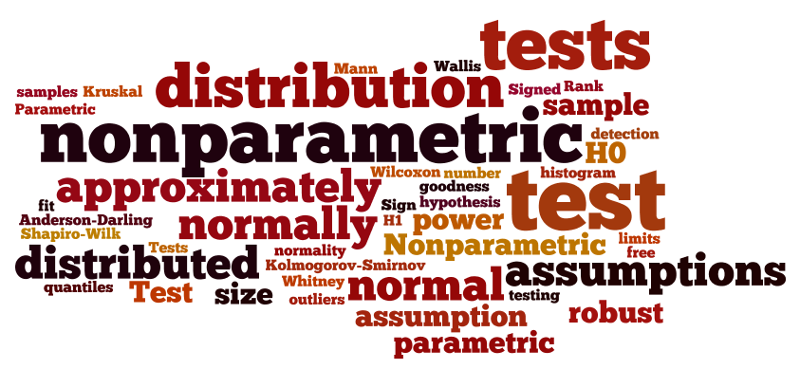Author:
Lisa Sullivan, PhD
Professor of Biostatistics
Boston University School of Public Health
Introduction

The three modules on hypothesis testing presented a number of tests of hypothesis for continuous, dichotomous and discrete outcomes. Tests for continuous outcomes focused on comparing means, while tests for dichotomous and discrete outcomes focused on comparing proportions. All of the tests presented in the modules on hypothesis testing are called parametric tests and are based on certain assumptions. For example, when running tests of hypothesis for means of continuous outcomes, all parametric tests assume that the outcome is approximately normally distributed in the population. This does not mean that the data in the observed sample follows a normal distribution, but rather that the outcome follows a normal distribution in the full population which is not observed. For many outcomes, investigators are comfortable with the normality assumption (i.e., most of the observations are in the center of the distribution while fewer are at either extreme). It also turns out that many statistical tests are robust, which means that they maintain their statistical properties even when assumptions are not entirely met. Tests are robust in the presence of violations of the normality assumption when the sample size is large based on the Central Limit Theorem (see page 11 in the module on Probability). When the sample size is small and the distribution of the outcome is not known and cannot be assumed to be approximately normally distributed, then alternative tests called nonparametric tests are appropriate.
(see page 11 in the module on Probability). When the sample size is small and the distribution of the outcome is not known and cannot be assumed to be approximately normally distributed, then alternative tests called nonparametric tests are appropriate.
Learning Objectives
After completing this module, the student will be able to:
- Compare and contrast parametric and nonparametric tests
- Identify multiple applications where nonparametric approaches are appropriate
- Perform and interpret the Mann Whitney U Test
- Perform and interpret the Sign test and Wilcoxon Signed Rank Test
- Compare and contrast the Sign test and Wilcoxon Signed Rank Test
- Perform and interpret the Kruskal Wallis test
- Identify the appropriate nonparametric hypothesis testing procedure based on type of outcome variable and number of samples


